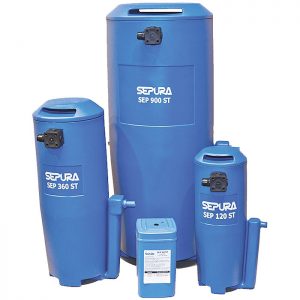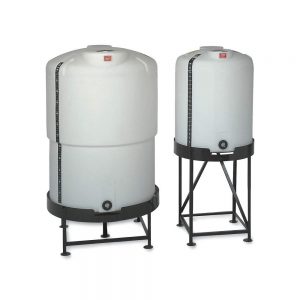

PolySep Oil Water Separators
- Description
Description
Unique and efficient PolySep Oil Water Separators from Ingersoll Rand offer unrivaled performance that can easily separate, and permanently absorb, virtually all lubricants.
Features
HOW POLYSEP WORKS
- Compressor systems produce large amounts of condensate. This condensate contains lubricant contaminants that should be disposed of properly. Ingersoll Rand PolySep Oil Water Separators use unique, specially coated Zeolite adsorption media that effectively separates and permanently adsorbs the contaminants. When properly installed and sized correctly, the PolySep separators are capable of providing condensate discharge levels as low as 15 mg/l (15 ppm) and only need to be replaced once a year or after 4,000 hours of operation for optimal performance.
UNRIVALED PERFORMANCE AND EFFICIENCY
- PolySep Oil Water Separators feature a specially coated Zeolite adsorption media that is able to withdraw and permanently adsorb virtually all lubricants. This proprietary filtration media can even handle highly emulsified lubricants like polyglycols, which are difficult to separate without the use of expensive, oversized separators as found PolySep Oil Water Separators 2-65 m3/min (60-2,300 cfm) in many competitive systems.
- The Responsible Choice By minimizing the cost associated with the disposal of fluids and keeping them out of the environment, PolySep Oil Water Separators help you to stay compliant with environmental regulations. The PolySep is also designed to operate with minimal maintenance or downtime, resulting in no mess or overflow.
PolySep Oil Water Separator Features
- Proven PolySep Zeolite Filtration Media works with all lubricants, including Ultra Coolant
- Removes virtually everything from water, including mineral oils, PAOs, polyolesters, diesters and polyglycols
- Designed to handle all condensate flow requirements up to 380 liters/hour (100 gallons/hour), even in hot and humid environments
- Zeolite adsorption media has a long life, only needing to be replaced once a year or after 4,000 hours of operation
- Complies with environmental regulations by minimizing fluid disposal costs • Minimal maintenance required, resulting in no mess or overflow







